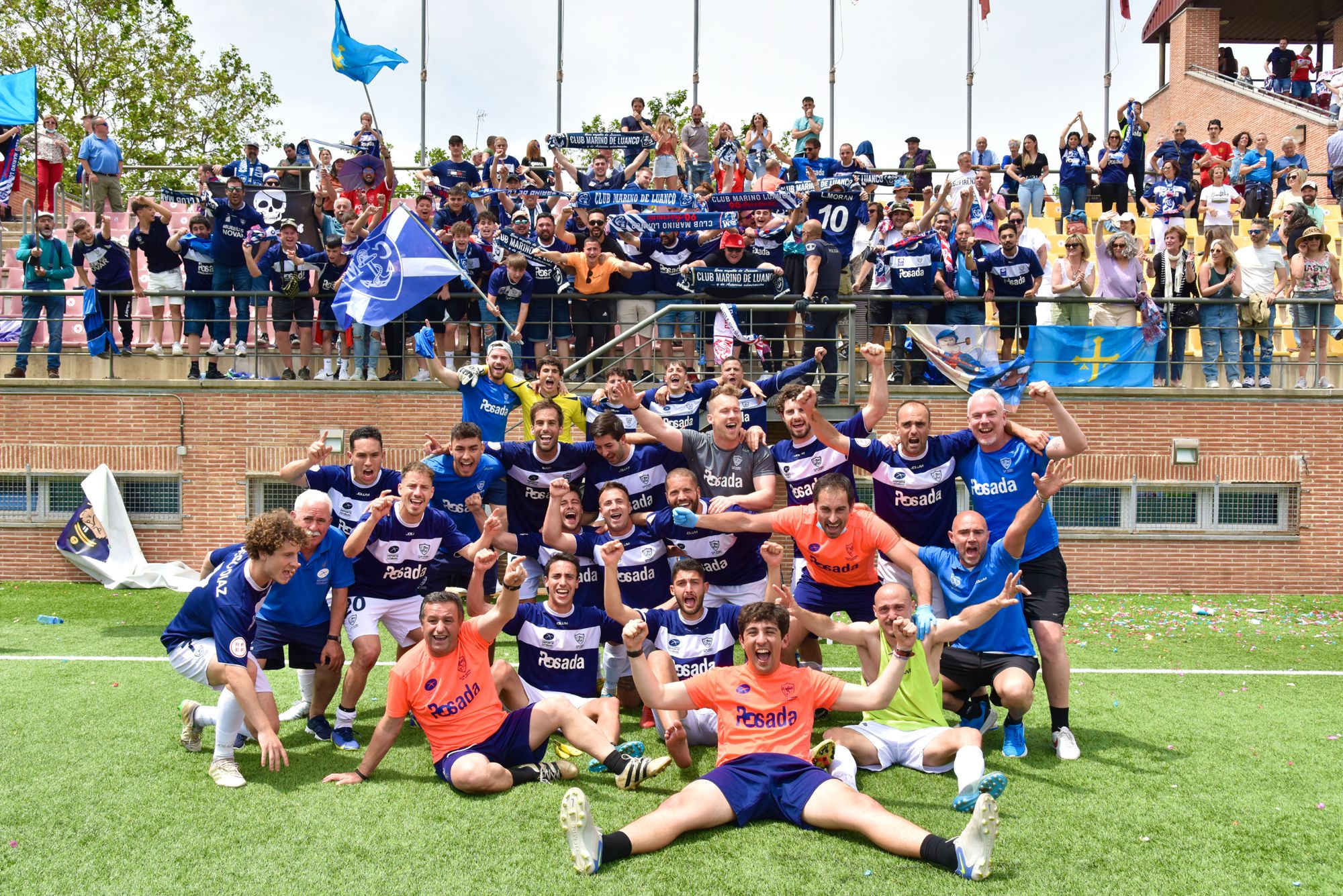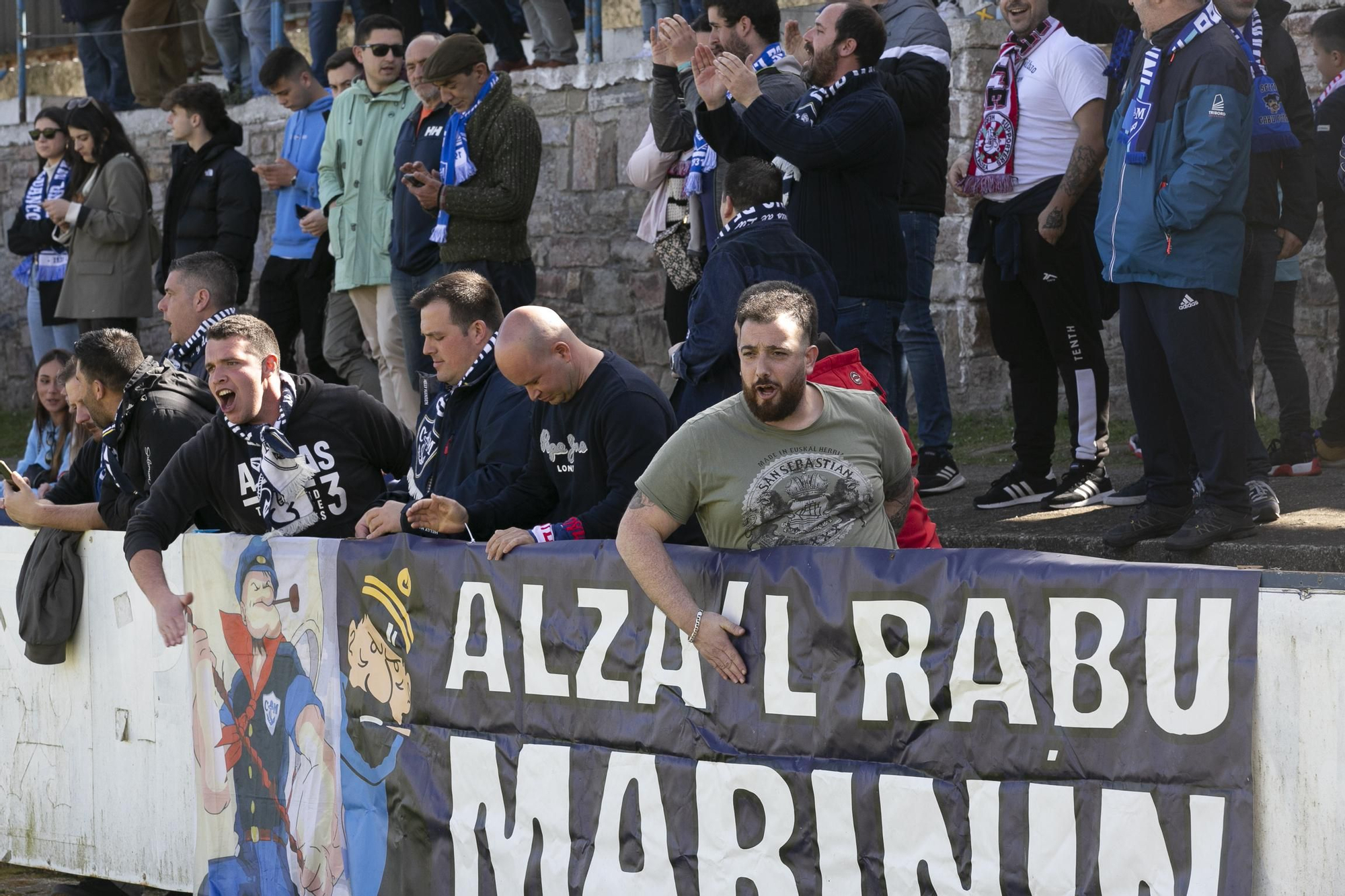A ‘maritime’ club along the Asturian coast

Luanco, locally called Lluanco, is a small fishing town in the utmost north of Asturias. Its club is called Marino as a tribute to the sea, which has been essential in the development, economy, and culture of Luanco. Marino has not played at great heights in the past but is currently often present in the Segunda Federación. Welcome to…Marino.

Luanco/lluanco
Luanco is the capital of the municipality of Gozón and lies between Candás and Avilés. For centuries, fishing was everything in Luanco, but around the 1970s, tourism became the most important source of income, being primarily known for historic buildings, the local gastronomy, the Maritime Museum, and the beaches. Moreover, Luanco is just a few kilometers from the Cabo de Peñas, a cape that’s the most northern point of Asturias.

Football in Luanco
The first moments of football in Luanco occurred during the 1910s on the beach, as long as the tide allowed it. The first representative football club would be Luanco FC, but that club already folded in 1930. One year later, Club Marino de Luanco was created, the team that still exists today.

In the first decades of its existence, Marino barely played in the Tercera División, which only changed after their fourth promotion in 1985. The luanquinos would actually never return to the Asturian amateur divisions, as they stabilized themselves in the Tercera. Moreover, they debuted in the Segunda División B around the end of the 1990s.

Marino’s best-ever season would be 2000-01, in which they achieved the impossible: winning every trophy possible: the league (Tercera División), the mini-league for promotion to the Segunda División B, the regional phase of the Copa RFEF, and the national phase of the same cup. The achievement went viral in Spain, and Marino won a lot of money as well as a ticket for the Copa del Rey of the next season, in which they would host the eventual winner, Deportivo de la Coruña.

This legendary promotion was the start of the glory era of Marino, which still has not ended. In the 21st century, Marino is usually present in the Segunda Federación, previously called the Segunda División B. Between 2000 and 2024, the marineros have been present in 16 editions of this competition.

Club of the sea
As most of the first directives and players of Marino were sailors, it was very logical for them to dedicate their club to the sea. Not only does the club’s name make such a reference, the same goes for the shirt and the crest. Moreover, the stadium is called Miramar, which translates freely to ‘look point over the sea’. In short, Marino is, in all aspects, the club of the sea.

Rivalries
Marino has two major rivalries. The first and foremost is Candás CF, the representative club of a neighboring town. The rivalry goes back to the first decades of the 20th century and is the most intensely lived derby among the marinistas. However, the derby with Real Avilés is more relevant in the 21st century, as Candás plays mostly in lower divisions. Real Avilés and Marino battle for hegemony in the northern zone of Asturias, even though Avilés is historically the bigger club.

The Future
The future of Marino looks promising. Its president, Luis Gallego, has been at the head of the club since 1990, after which all successes occurred, which seems like a positive impulse. Moreover, Marino continues composing teams with a balance between veterans and young talents while always receiving great support from its supporters. This was…Marino.

Sources
- Borchers, L. (2021). GOLAZO. Self-published.
- Borchers, L. (2022). CARA O CRUZ. Self-published.
- http://www.clubmarinodeluanco.com/historia.html
- http://lafutbolteca.com/club-marino-de-luanco/
- https://www.abc.es/deportes/futbol/abci-asombroso-marino-luanco-equipo-leyenda-futbol-modesto-202005180103_noticia.html
Leave a comment